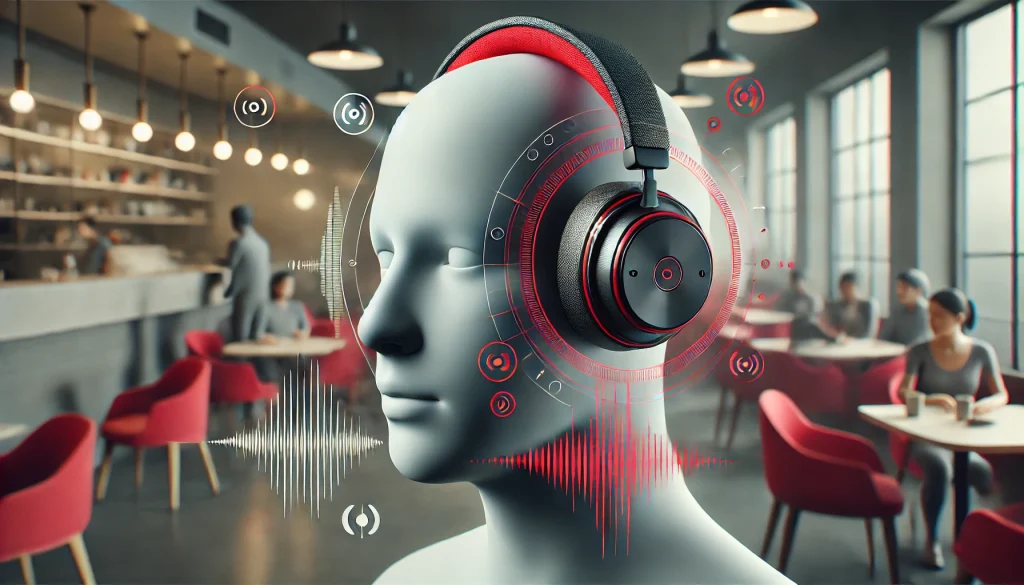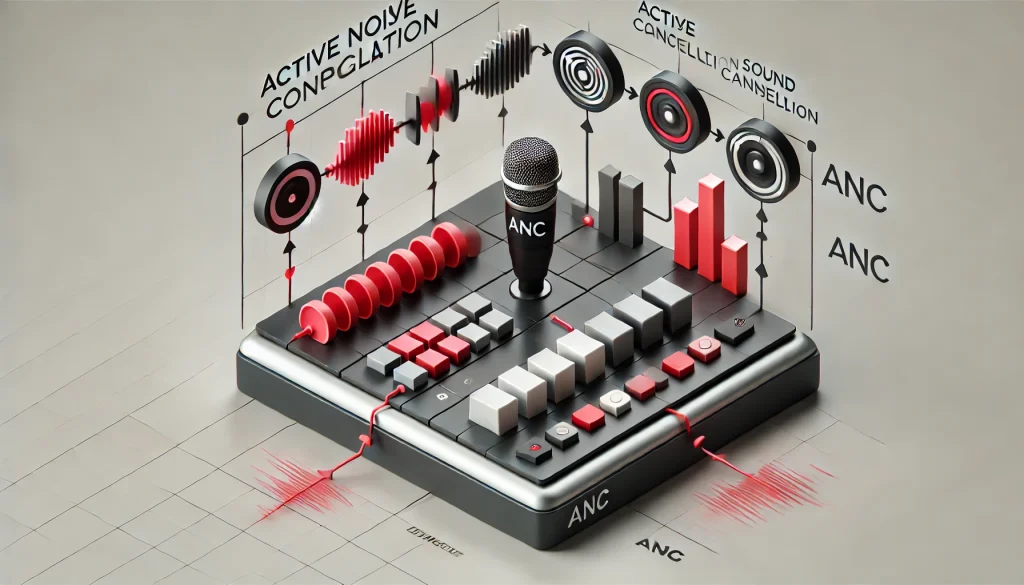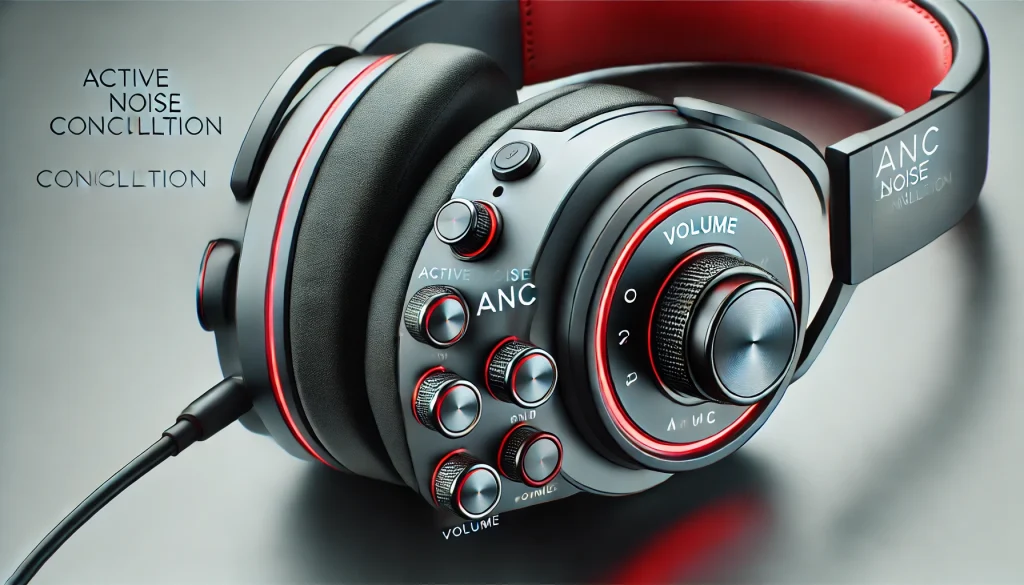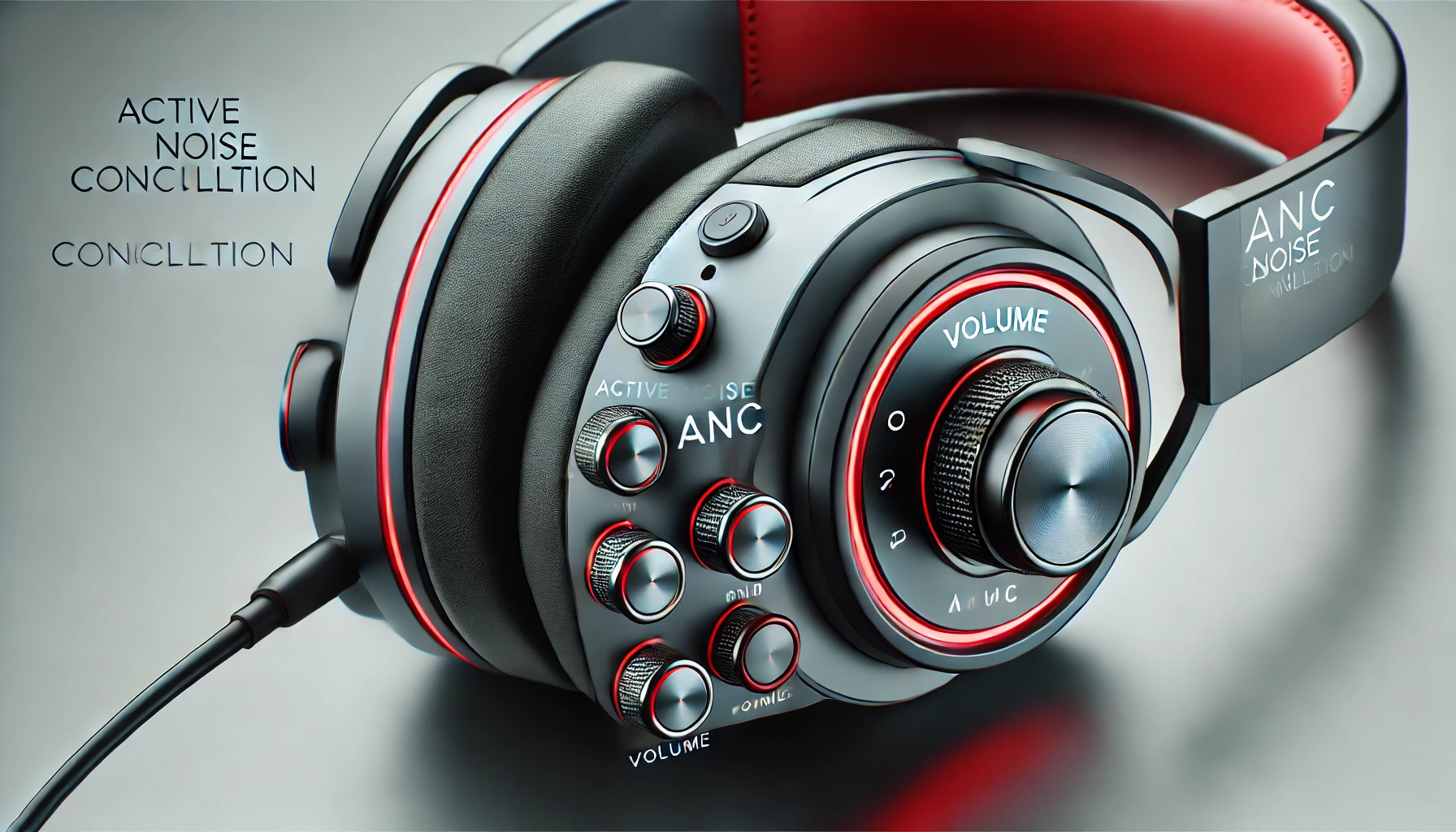
Active Noise Cancellation (ANC) is one of the most sought-after features in modern headphones, especially for those who spend time in noisy environments like public transport, busy offices, or airplanes. With ANC technology, users can enjoy a more immersive and peaceful audio experience by blocking out unwanted external sounds. But how does this magical-sounding technology actually work, and why has it become so popular?
In this guide, we’ll break down what Active Noise Cancellation is, how it works, and why it’s an essential feature in today’s best headphones. Whether you’re commuting, traveling, or simply trying to focus, understanding ANC can help you choose the right headphones to fit your lifestyle. We’ll also cover the different types of ANC, and look at its pros and cons to give you a comprehensive understanding of this impressive technology.
What is Active Noise Cancellation?
Active Noise Cancellation (ANC) is a technology designed to reduce or eliminate unwanted background noise, creating a more isolated and immersive listening experience. Unlike passive noise isolation, which uses physical materials like padding to block sound, ANC actively targets and cancels out external noise.
ANC works by using built-in microphones to detect ambient sounds in the environment. These microphones then create an “anti-noise” signal that mirrors the external soundwaves but in the opposite phase. When these two sound waves—noise and anti-noise—meet, they cancel each other out, resulting in a quieter environment for the listener.
This technology is particularly effective for low, consistent sounds like engine noise on a plane or the hum of an air conditioner. However, it is less effective for sudden, high-pitched noises, which are harder to predict and cancel. ANC is a game-changer for people who want to focus, relax, or enjoy music without distractions.
How Does Active Noise Cancellation Work?

Active Noise Cancellation works by using three essential components:
- Microphones:
Headphones equipped with ANC have small microphones built into the earcups. These microphones detect ambient noise from the environment, such as the hum of engines or the chatter of a café. - Noise-Canceling Circuitry:
Once the microphones pick up external sounds, the headphones process the noise through internal circuitry. This system analyzes the sound waves and generates a sound wave that is the exact opposite (also known as an “anti-noise” wave). - Speakers:
The anti-noise wave is then sent through the headphone speakers, where it meets the external noise. When the two waves collide, they cancel each other out. This process creates the effect of silence or significantly reduced noise, allowing you to focus on your audio.
One of the key benefits of ANC is that it works best with low, constant noises, like the hum of airplane engines, traffic, or the sound of an air conditioner. While it’s effective in blocking these sounds, ANC struggles with sudden, irregular noises, like conversations or door slams.
Additionally, most ANC headphones allow users to toggle between different ANC levels or turn it off completely, giving flexibility depending on the surrounding noise levels. Overall, ANC headphones deliver a quieter and more immersive audio experience, particularly in environments with steady background noise.
Why is Active Noise Cancellation Important?

Active Noise Cancellation provides a range of benefits that go beyond simply blocking out noise. Here are some reasons why ANC is important for today’s headphone users:
- Improved Sound Quality:
ANC enhances audio clarity by eliminating distractions. With less background noise, users can listen to music, podcasts, or calls at lower volumes, which also helps to protect hearing over time. - Increased Focus:
Whether you’re working in a noisy office or studying in a busy café, ANC can help you concentrate by reducing background noise. Many people find that ANC improves productivity by allowing them to focus on their tasks without distractions. - Travel Comfort:
Frequent travelers, especially those on planes or trains, benefit from ANC’s ability to reduce engine noise. It makes long journeys more comfortable by creating a quieter environment, even in crowded or loud places. - Hearing Health:
Constantly turning up the volume to drown out noise can damage hearing over time. ANC lets users listen at lower volumes without losing audio quality, which helps protect their ears from long-term harm.
Types of Active Noise Cancellation
There are three primary types of Active Noise Cancellation: Feedforward, Feedback, and Hybrid. Here’s a breakdown of how each one works and their best use cases:
| Type of ANC | How it Works | Best For |
|---|---|---|
| Feedforward ANC | Microphones outside the earcup detect noise | Sudden external noises |
| Feedback ANC | Microphones inside the earcup detect noise | Constant ambient noise |
| Hybrid ANC | Combines both feedforward and feedback mics | Overall superior noise cancellation |
- Feedforward ANC is ideal for catching sudden, high-frequency sounds like car horns.
- Feedback ANC excels at managing internal sounds, like the noise generated inside the headphones.
- Hybrid ANC combines both technologies, offering more balanced and efficient noise cancellation.
Pros & Cons of Active Noise Cancellation
| Pros | Cons |
|---|---|
| Blocks out background noise effectively | May drain battery faster |
| Improves focus and productivity | Can sometimes affect sound quality |
| Helps reduce hearing fatigue | Not effective for all types of noise |
| Ideal for frequent travelers | Adds weight to headphones |
Active Noise Cancellation vs Passive Noise Isolation
While Active Noise Cancellation uses technology to cancel out soundwaves, Passive Noise Isolation relies purely on physical barriers like thick padding or tight-fitting earcups to block external sounds. Here’s how they compare:
- Active Noise Cancellation:
ANC actively uses microphones and speakers to cancel out external noise. This makes it more effective in loud environments with constant, low-frequency sounds like engine hums or air conditioning. It requires power to function, which can drain the battery. - Passive Noise Isolation:
Passive noise isolation works by physically blocking sound from entering your ears, often through earcups made from sound-dampening materials. It’s highly effective for high-frequency noises like voices, but it doesn’t work as well for constant low-frequency sounds. It also doesn’t require any power, so it won’t affect battery life.
Ultimately, ANC is more suitable for environments with consistent noise, while passive isolation works well in everyday scenarios where headphones can block noise through design alone.
Top Headphone Brands Offering ANC
Several leading brands have mastered Active Noise Cancellation technology, offering a range of models that cater to different needs. Here are three of the top brands:
- Sony WH-1000XM5: Sony’s flagship ANC headphones are renowned for their excellent sound quality and customizable noise-canceling options.
- Bose QuietComfort 45: Bose is a pioneer in ANC technology, and the QuietComfort 45 remains one of the top choices for travelers due to its comfort and superior noise reduction.
- Apple AirPods Pro 2: Known for their seamless integration with Apple devices, the AirPods Pro 2 deliver impressive ANC in a compact, wireless design, making them perfect for iPhone users.
Applications of Active Noise Cancellation
Commuting
Active Noise Cancellation is highly beneficial for daily commuters. Whether you’re on a noisy bus, subway, or walking through busy city streets, ANC helps block out the distracting sounds of traffic, horns, and conversations. By using ANC, commuters can enjoy music, podcasts, or even silence, allowing for a more relaxed and focused journey. It helps reduce the need to increase volume, which protects your hearing over time. Commuters can arrive at their destination feeling more refreshed, thanks to the quieter, more peaceful environment that ANC creates.
Traveling
Frequent flyers benefit immensely from ANC, especially during long flights. The constant hum of airplane engines can be tiring, making it difficult to relax or focus on entertainment. With ANC, the drone of engines is significantly reduced, creating a quieter and more comfortable atmosphere for listening to music, watching movies, or sleeping. Many travelers report feeling less fatigued after using ANC headphones during flights, as the technology helps create a more peaceful in-flight experience. It is especially useful for those trying to sleep or work while in transit.
Work and Study
ANC is a game-changer for individuals working or studying in noisy environments. Whether you’re in a shared office, a bustling café, or a library, ANC allows you to focus by canceling out background conversations and ambient noise. This enhanced concentration boosts productivity, enabling workers and students to complete tasks more efficiently. By reducing distractions, ANC headphones help create a personal “quiet zone,” even in the midst of chaos. Many users find ANC indispensable for deep work or studying sessions that require intense focus.
Resources
- Status. What Is Active Noise Cancellation and How Does It Work?
- TechRadar. What is Active Noise Cancellation? Everything You Wanted to Know About ANC Headphones
- HowToGeek. What is Active Noise Cancellation (ANC)?
- Acousticc. Active Noise Cancellation Explained
- Bose. What is Active Noise Cancellation?

Brijesh Gohil is the founder of Tech Brij, A popular Tech Blog which is focused on Tech tips & Buying Guides. You can follow him on Facebook, Twitter, Google + & LinkedIn.

